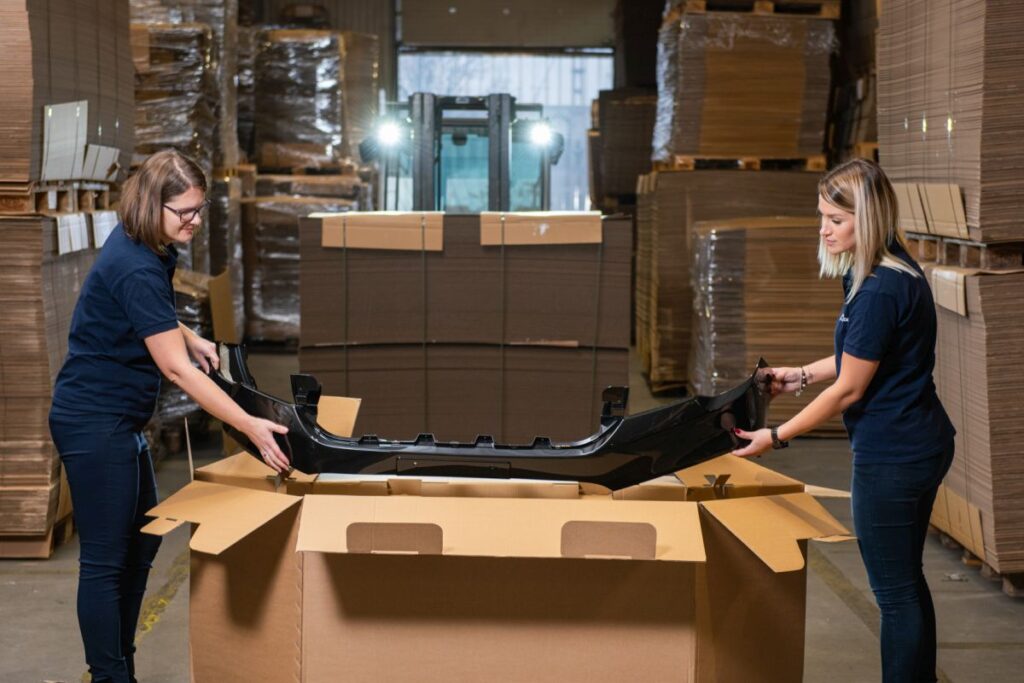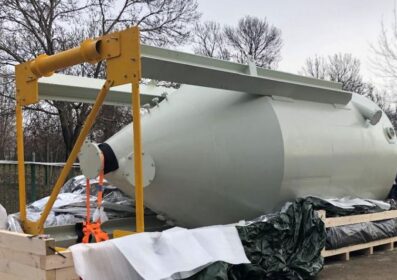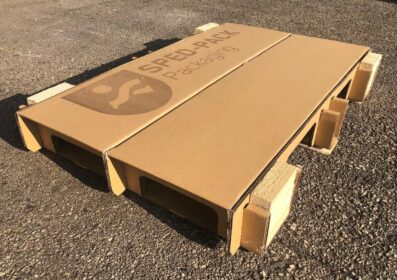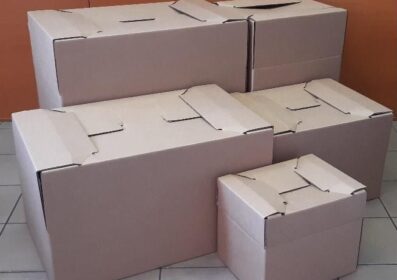Customized bumper packaging
We have a large number of automotive companies among our major customers, so it is not unusual for us to be asked to design the packaging of car parts. Our custom bumper packaging was one such request. Our partner wanted to package bumpers, we were given a sample bumper and the design of the box was left entirely to our expertise.
When designing the box, we tried to ensure that the box was cost-effective, but robust enough to prevent damage to the product. In addition, the bumpers are shipped in bulk, so it was also important to minimise the space required per box and to make it easy to deliver the boxes to the customer.

Design
Design considerations
To start the design, we first gathered the main considerations:
- the box should protect the product
- cost-effectiveness
- efficient design
- easy to transport
The basics
The most cost-effective solution from a manufacturing point of view is the plain roof-bottom tile box, but in our case the formula was unfortunately not so simple. Due to the curved design of the bumper, a plain header box would require some form of protection/space filler to prevent the product from moving inside the packaging and being damaged. This would be an extra cost. In addition, it would not be the best solution in terms of size, so we decided to design a box that would wrap around the product and fit the shape of the product.
Structural design
Since we decided during the design phase that our box would match the shape of the product, we first had to study the shape of the bumper more closely.
Talking about cost efficiency for the boxes, a significant part of the price is the cost of assembling the boxes and the associated material costs. In addition, because of their unique design, the boxes are very difficult to deliver in assembled form, which is why it is most convenient to deliver them in flat form, where it is also important for the customer to be able to assemble the boxes easily without any tools. In our opinion, a foldable box is the most optimal solution to these aspects and we have therefore tried to implement this solution for this product as well.
The most critical point in terms of structural design is the bumper bends, as this is where the product is most vulnerable during transport. We have therefore designed our box to provide adequate support for this area of the product.
Material selection
Although the function of the bumper itself is to absorb mechanical impact, it will of course have to perform its function once it is on the car. It is therefore important that the box provides adequate protection during transport, of which the right choice of materials is an essential part.
There were two main aspects to consider when choosing the materials:
- the first was the weight of the product,
- the second was the fragility of the product.
The weight of the product is not very significant, so it would not justify choosing a box with a stronger material, but the product is made of a very thin material, which is quite large and therefore fragile. As it is a folded box, it is important that the material of the box is not too rigid, otherwise the material may be damaged or even broken during folding. For this reason, we made our box from a moderately strong, five-layer material.
Production
Sample production
The pattern for our box was cut out on a laser plotter, which made the design process much easier, testing any modifications and finalising the box. To do this, we designed the box’s blueprints in ArtiosCAD, then converted them to the appropriate format and cut them out on the laser plotter. This is a relatively slow process, so it is rarely used for mass production.
Mass production
As our customer required a small number of boxes, we made an exception and mass produced them on the laser plotter machine. For larger production runs, a die-cutter is required to cut the boxes on the die-cutting machine. With this process the production process is significantly faster and we are able to produce larger quantities in a short time.




